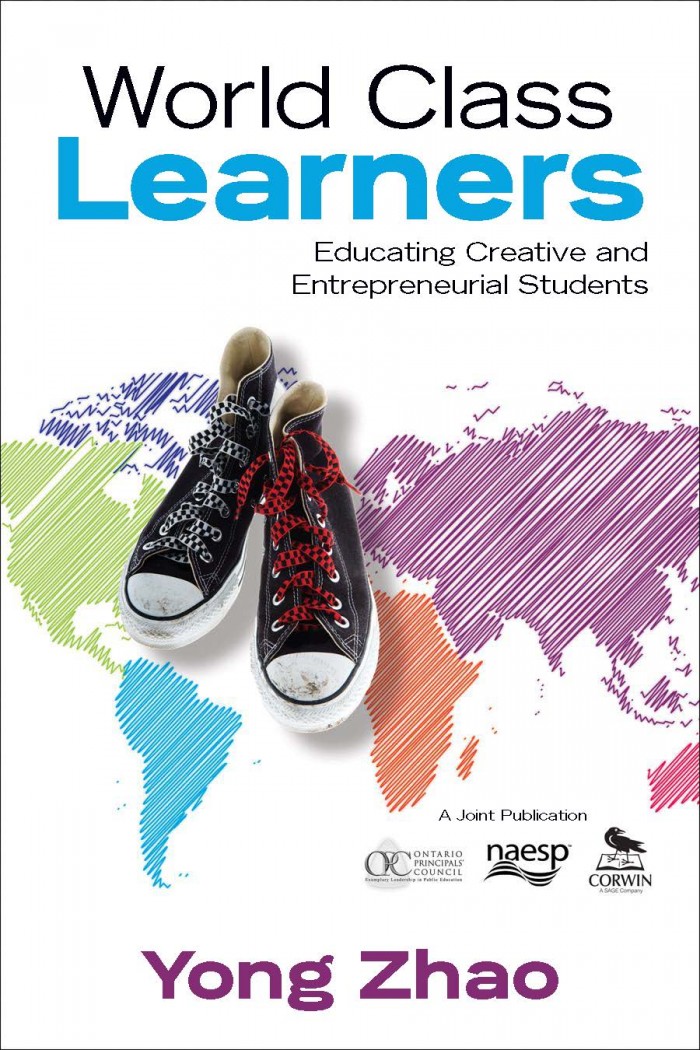Hurricane Sandy: Recommendations for Administrators and Teachers by Denny Taylor
Professor Denny Taylor of Hofstra University asked me to share this. Thanks, Denny.–Yong
November 3, 2012
Recommendations for Administrators and Teachers Responding to Hurricane Sandy:
Hurricane Sandy has created long lasting catastrophic conditions in the North East of the United States. People are making heroic efforts to respond to the emergency. At hospitals in New York City nurses arrived on Sunday and did not leave until Wednesday evening. On Monday Michael Bloomberg, the mayor of NYC, called on New York teachers to be first responders in public shelters in the city. Teachers are strong, capable, compassionate, and always ready to take care of children and their families, but, unlike doctors, nurses, the police, firefighters and EMT’s, teachers receive little or no training.
Nevertheless teachers are leading the way.
One teacher from Long Beach writes, “I have been running our medical triage where we assess patients and then dispatch them to ambulances or to busses to be transported to shelters. We also have a doctor working off of a trolley trying to see as many people as he can to get medication and vaccinations out to the people who need it. The outreach has been amazing”.
“I am wondering what they are doing about the public schools here?” the same teacher writes. “They got a lot of damage from what I understand and many students have been displaced from their homes”.
“We have a meeting at one of the schools in Long Beach on Tuesday for those who can make it,” another teacher writes. “I’m going to attend, and see what my district plans on doing in regard to the school year. My school also had 3-5 feet of water in every classroom, and is in the worst shape out of all buildings in the district. I can’t imagine how we are going to have school.”
School districts across the U.S. have developed emergency plans; however, few educators receive preparation to be first responders in the aftermath of catastrophic events when schools reopen and children arrive whose homes have been damaged or destroyed. Some will not know what has happened to family and friends; others will have lost their pets. Many of their families will be living without light or heat and some will have difficulty obtaining water or fresh food to eat.
In such circumstances many teachers will have experienced similar losses and hardships, and yet they will return to school to make sure their classrooms are safe places for students to be. The following recommendations are based upon the findings of psychiatric and medical research and build on the advice the National Child Stress Network (2006). The recommendations are also supported by the findings of my ethnographic research in schools in Israel, the West Bank and Gaza, and in schools in Louisiana in the aftermath of Hurricane Katrina. The most recent review of the recommendations took place in May 2008 when teachers in St. Bernard Parish and Jefferson Parish, Louisiana reflected on the impact of the storm (their advice is included in parentheses).
The enduring message, in hindsight, from the teachers in Louisiana is that in the aftermath of catastrophic events all potentially stressful activities (test prep and testing) should be suspended and schools should to be safe joyful places for children to be. have the opportunity to recover when catastrophes take place. Every effort should be made to recognize the importance of children’s families and friends. Have a plan, share the plan and stick to the plan. Build strong communities, incorporate health and well being into pedagogical initiatives. Every attempt should be made to take care of the whole child, every child, and make school a joyful place for children to be. This is the basis for school and community preparedness for catastrophes. In the aftermath of teachers in Louisiana stood outside with umbrellas to welcome children back to schools that put the pressures of unreasonable mandates to one side so that they could take care of every child. Here are the recommendations with the addition of the advice of Louisiana teachers are in brackets:
First Responses in Shelters When Catastrophic Events Take Place:
- Talking with children and youth and their families, who have experienced a catastrophic event, is an intervention. Just being comfortable with the fact that children are distressed, helps first responders.
- Make sure children with special needs are located and that their immediate needs are met. This might include making sure the child receives medical attention (“be prepared to take care of children who are autistic” “and those who are wheelchair bound”).
- When there are young children involved, activities that promote a sense of well being include:
a. Playing with children to help distract them;
b. If parents are present holding babies so parents can eat or rest;
c. If there is nothing to do, helping with care giving, just making yourself available, and “being there” with them.
- Do not ask children to reveal emotional information, but if they do, listen, (“provide opportunities” “give them crayons”).
- Try to focus on their immediate needs by reducing hassles for survivors. If you assist doctors and Red Cross workers in problem-solving and logistics (e.g. making telephone calls, replacing personal items, etc.) you are providing a service.
- If possible provide personal hygiene items including antibacterial wipes, tissues, lotion, tooth brushes and tooth paste, child and adult diapers, female tampons and pads.
First Responses in Schools:
- Assume that students are doing their absolute best to cope.
- Encourage students to engage in self-care.
- Help students feel as much in control as they can.
- Make sure students with special needs receive assistance (“think about allergies” “peanut butter”).
- Don’t assume first responders have taken care of basic needs.
- Make sure students have food, clothing and shelter.
- Keep parents informed and send letters when possible (“If possible” “Finding ways to communicate is very difficult”).
- Teachers should not provide psychological intervention, but simply listen and support students who are in distress.
- It is important that students are not asked to tell their stories. Talking about what happened to them and their families can lead to students reliving the catastrophic event and to retraumatization.
- If students talk about the events that have taken place, listen and “be there” for them.
- If students focus on the catastrophic event when they write or draw, make sure that they keep their work.
- Respect students’ wishes.
- Do not make false assurances.
- Re-establish basic routines with students (“try to do this as soon as possible”).
- Engage students in creative activities. Music and art are important.
- Read stories and then more stories.
- Suspend all activities that might be stressful.
- Test prep and tests should be postponed
- Make sure there is time for students to play, have fun, and participate in sports activities. Participating in pleasurable activities is essential for recovery.
- Reassure students that with the exception of self-destructive behaviors and emotions, their feelings and reactions are reasonable given the situation. (“We are seeing students who coped after the storm who are now having difficulties”).
- If you are concerned about a student, know what to do to triage that student and get them mental or physical health services at your site.
- Let an administrator or someone in charge of the relief effort know what needs you have identified, so services can be provided to help meet the needs of your students.
- Make sure that every teacher has a list of resources and knows what services are available.
- Remember that teachers have also experienced the catastrophic event and need support too.
Learning from Teachers who were First Responders in the Aftermath of Hurricane Katrina:
In Louisiana in May 2008 teachers talked about the importance of making time for teacher support groups. Meetings can be held at lunch time or after school. Teachers need time to discuss what’s happening and share feelings. These groups should be non-hierarchical and rotate leadership.
The Louisiana teachers emphasized the importance that time is also set aside for students to talk. “Morning meetings,” one teacher said, “we roll a dice with happy, sad, embarrassing, scary, and funny on it and children talk if they want to.” They all talked about the importance of helping students find out what had happened to their friends and of reuniting friends whenever possible.
“One catastrophe can lead to another,” a teacher says. She recounts, “A child holding on to a tree with his mother and father was coping okay and then his mother tried to commit suicide.” Other teachers shares similar stories. Three years after Hurricane Katrina tragedies are still occurring. They talk of time. “Catastrophes happen and children might cope but a year later, two years later problems might surface.”
The psychiatrist, Anand Pandya (2006), provides verification of the experiences of the Louisiana teachers when he speaks of the expectation of “symptoms” during the acute phase of an emergency that become “transient and fluid,” often recurring weeks, months or years after the disaster happened. He spoke of the “let down,” and so did the Louisiana teachers, who spoke at length at the changes they were observing in their students’ behaviors, as they began to understand that their families, schools and communities would never be the same as they were before Katrina. One teacher spoke to the way in which she is approaching this problem. “When something is happening in the community I point it our,” she says. “’Did you see the street signs!’” “’Did you see the new trees they’ve planted?’”
The Louisiana teachers talked of recovery, of the lack of support from Federal agencies and repeatedly spoke of schools as the center of the recovery effort. “It’s important for schools to have a single point of entry for all services that they need,” one says. “If there was a place in school,” another begins. “If schools could have a resource place just like a medical tent,” another continues. “When the school reopened it was the only place parents could eat.” “They came in to use the bathroom.” “It was the only place they could get help.” “We took care of the parents too.” “We are still helping them.”




























Anther thoughtful, insightful, and compassionate article by Denny Taylor. Thanks, Dr. Zhao.
Feel free to comment:
The views expressed on this site are entirely my own. They do not represent my employer or any other organization/institution. All comments are subject to approval.